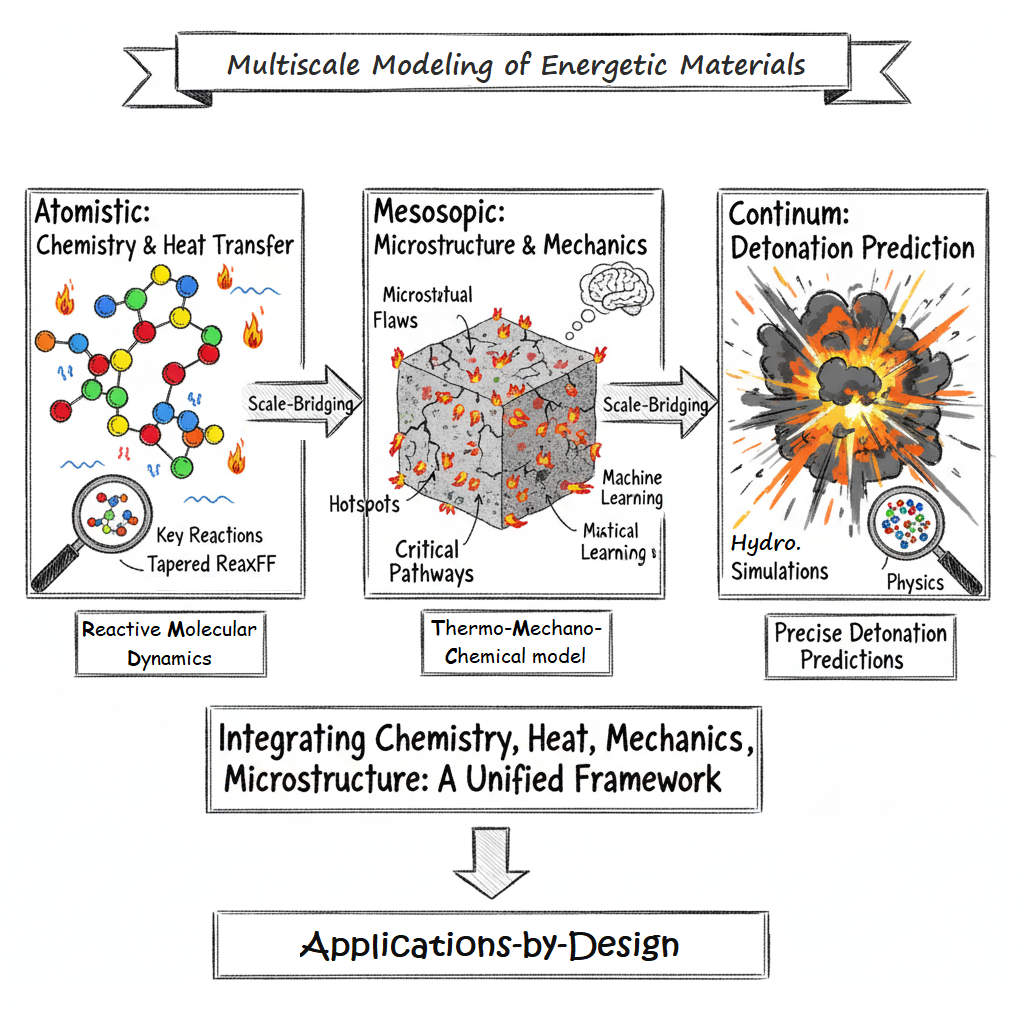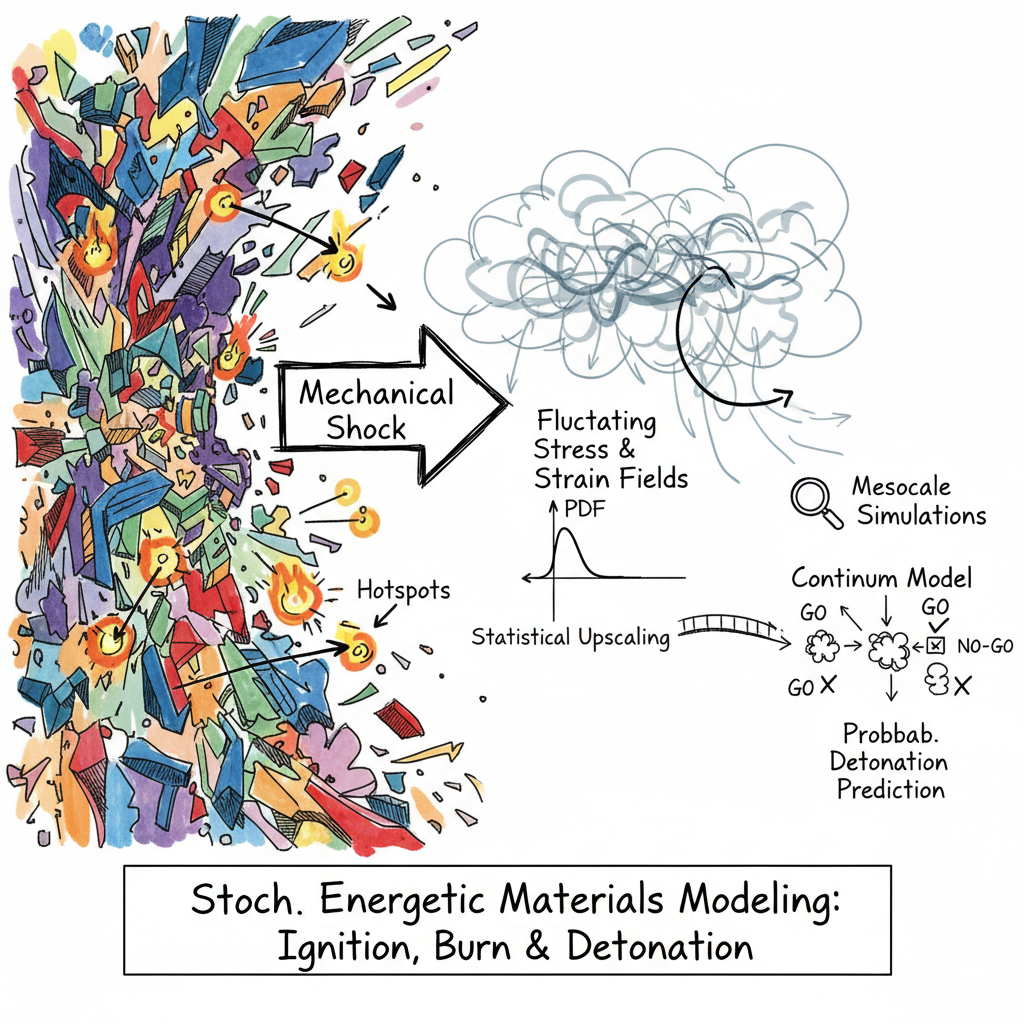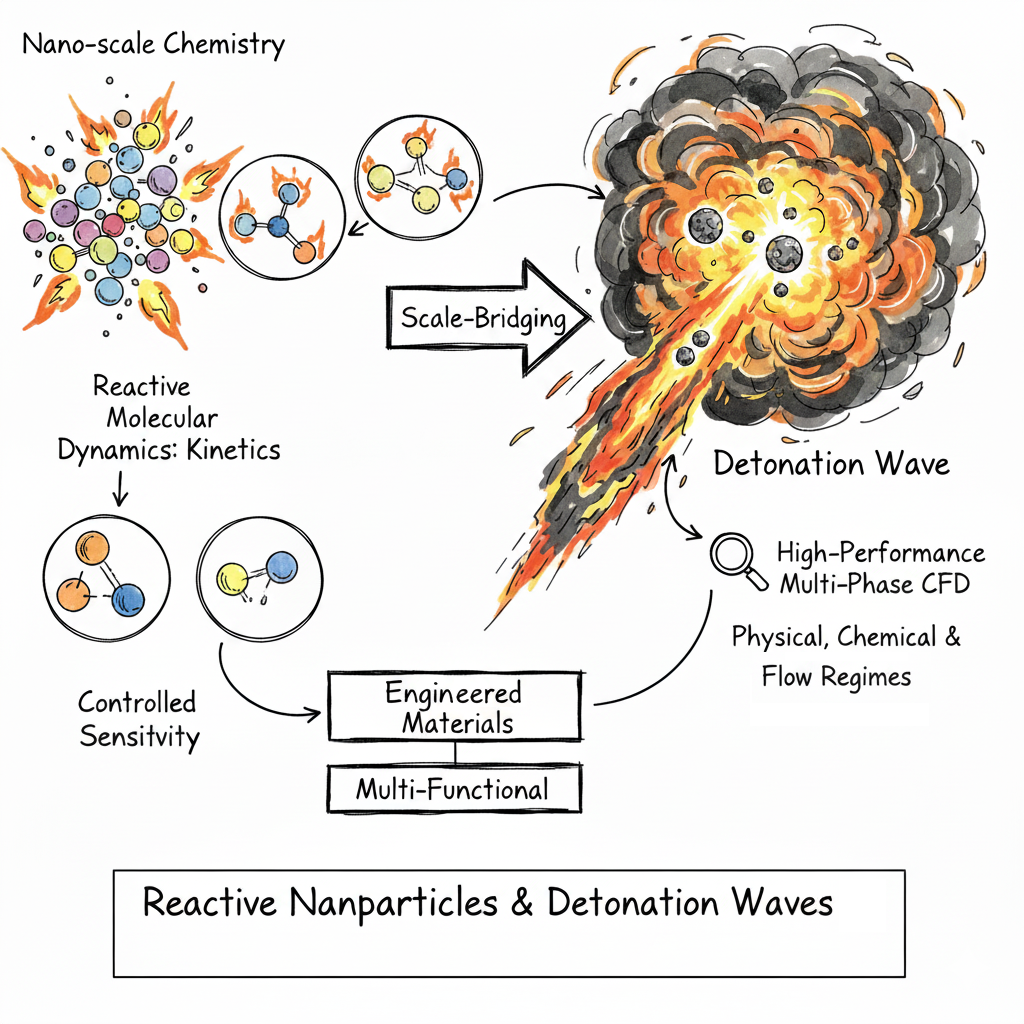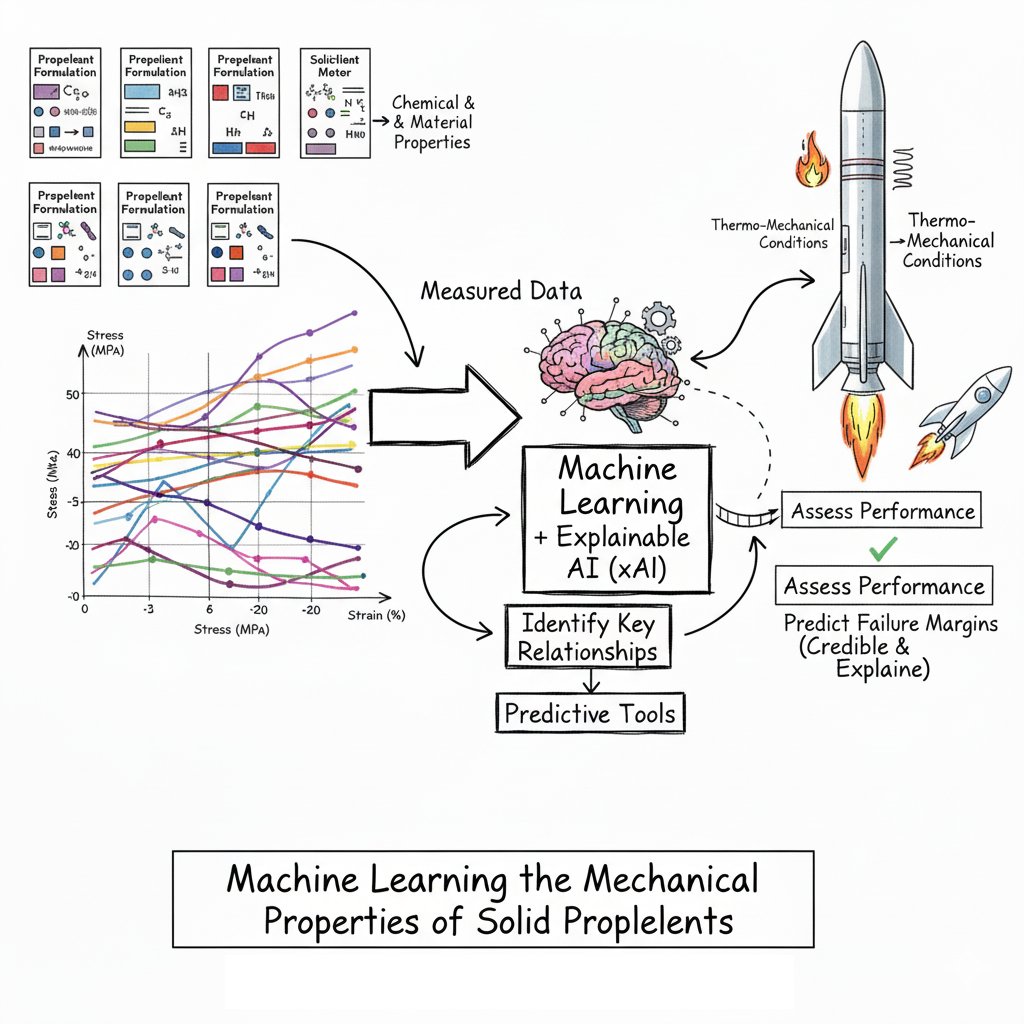Projects
1. Multiscale models of energetic materialsAlthough energetic materials have been utilized since the 9th century, our fundamental understanding of their structure, properties, and function remains incomplete, despite significant progress. Our research pursues an ambitious goal: building a multi-scale modeling framework to decode the ignition and transition to detonation of real energetic materials, aiming for safer and more reliable energetics. We devise a hierarchical strategy to bridge fundamental molecular mechanisms with mesoscopic descriptions of hot-spots and hydrodynamic models of detonation waves. Utilizing machine learning scale-briding techniques, we aim to move beyond phenomenologial models and build solid understanding. Ultimately, by integrating efficient information transfer across relevant time and length-scales, we seek to facilitate energetic materials applications-by-design. |

|
2. Stochastic models of energetic materials performanceConventional deterministic models of energetic materials are incomplete because their performance is governed by stochastic processes rooted in microstructural heterogeneity and noisy environments. In turn, this randomness may manifest itself in essentially a random response of the material at the micro- and meso-scales which govern initiation phenomena. Hence, the predictive ability of any "bottom-up" mechanistic model will be compromised unless we shift towards a stochastic description. Simultaneously, a natural scale-bridging mechanism emerges as we increase the sampling space. In this project, we look into models of ignition and burn-front propagation at grain-scale models of energetic materials. |

|
3. Interactions of nanoparticles and detonation wavesDue to their large surface to volume ratio, the addition of metallic nanoparticles, such as aluminum, into energetic compositions offers a putative route to enhance detonation velocities and brisance. Nevertheless, the precise conditions necessary to couple the nanoparticle energy to detonation wave energy are not fully understood. As a result, contradicting results have been reported by different groups as to the potential of metallic nanoparticles to enhance the detonation parameters of energetic materials. To address this complex problem, the research combines large-scale reactive molecular dynamics simulations with state-of-the-art multiphase hydrodynamics in a collaborative effort with the research group of Dr Kozak (Mech. Engineering) from Tel-Aviv University. |

|
4. Machine Learning Solid PropellantsPredicting the mechanical integrity of solid propellants is a complex challenge with no single unifying theory. This research utilizes machine learning and explainable AI (xAI) techniques to gain fundamental insight into their mechanical performance based on their formulation ID. The central goal is to establish a clear, data-driven link between a propellant's chemical ingredients and material properties and its experimentally measured mechanical response. This connection is critical for assessing successful performance and ensuring reliability under the vast set of thermo-mechanical conditions experienced during operation. By analyzing extensive libraries of measured stress-strain curves alongside detailed chemical and material data, machine learning algorithms can identify the key relationships that govern mechanical behavior. We strive to create predictive tools that can guide the design of next-generation propellant systems and help predict failure margines in a credible and explainable manner. Work in collaboration with Dr Somech and Prof. Glickman (Computer Science) from Bar-Ilan University. |

|
5. High-throughput synthesis, characterization and modeling of High-Entropy MaterialsDescription TBD. |
Figure TBD |